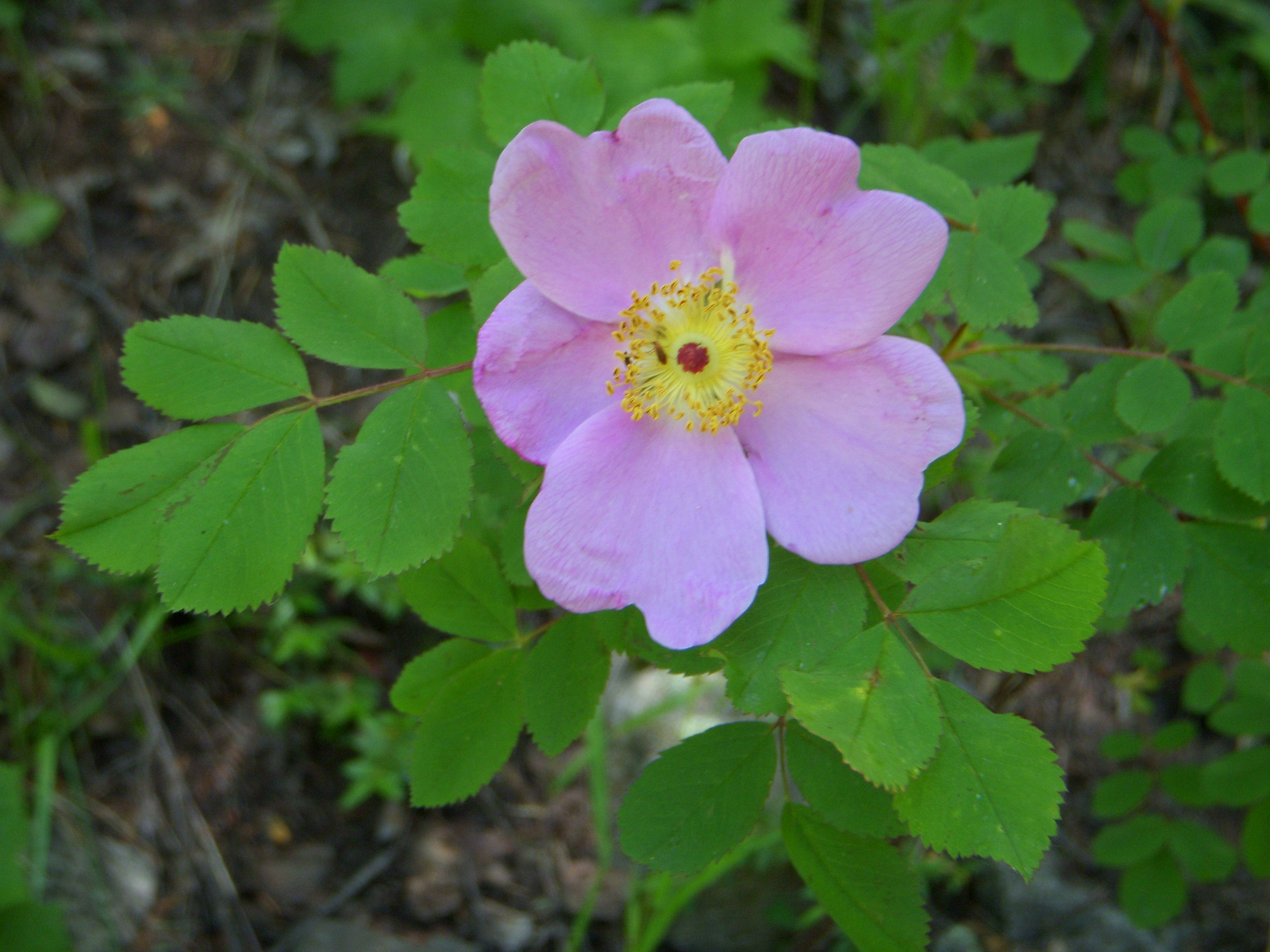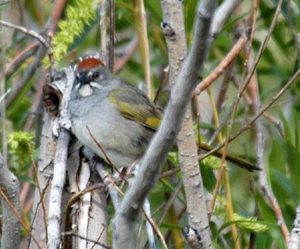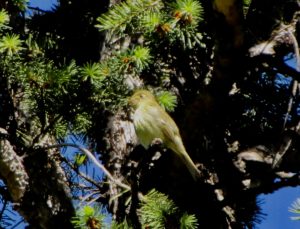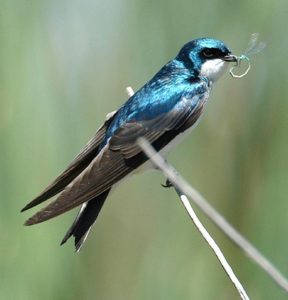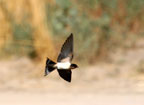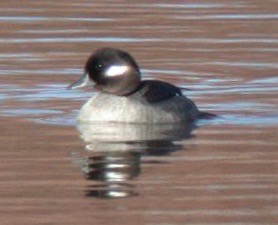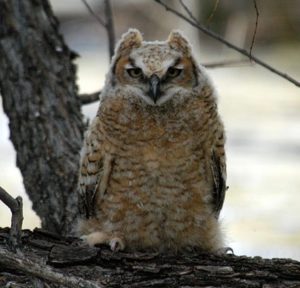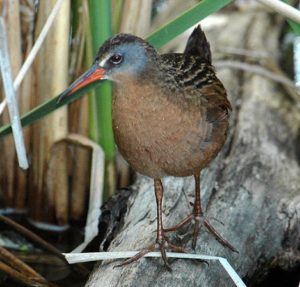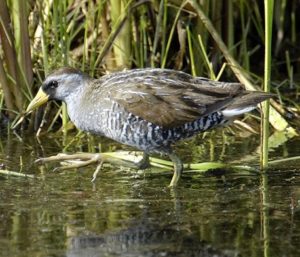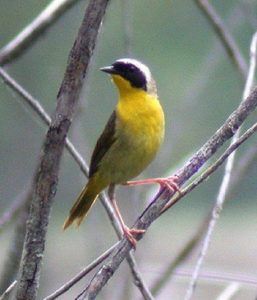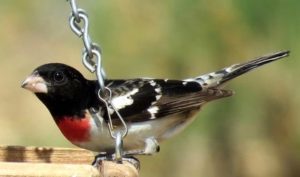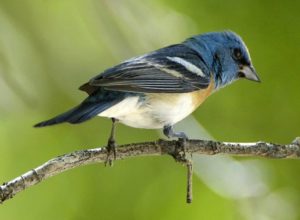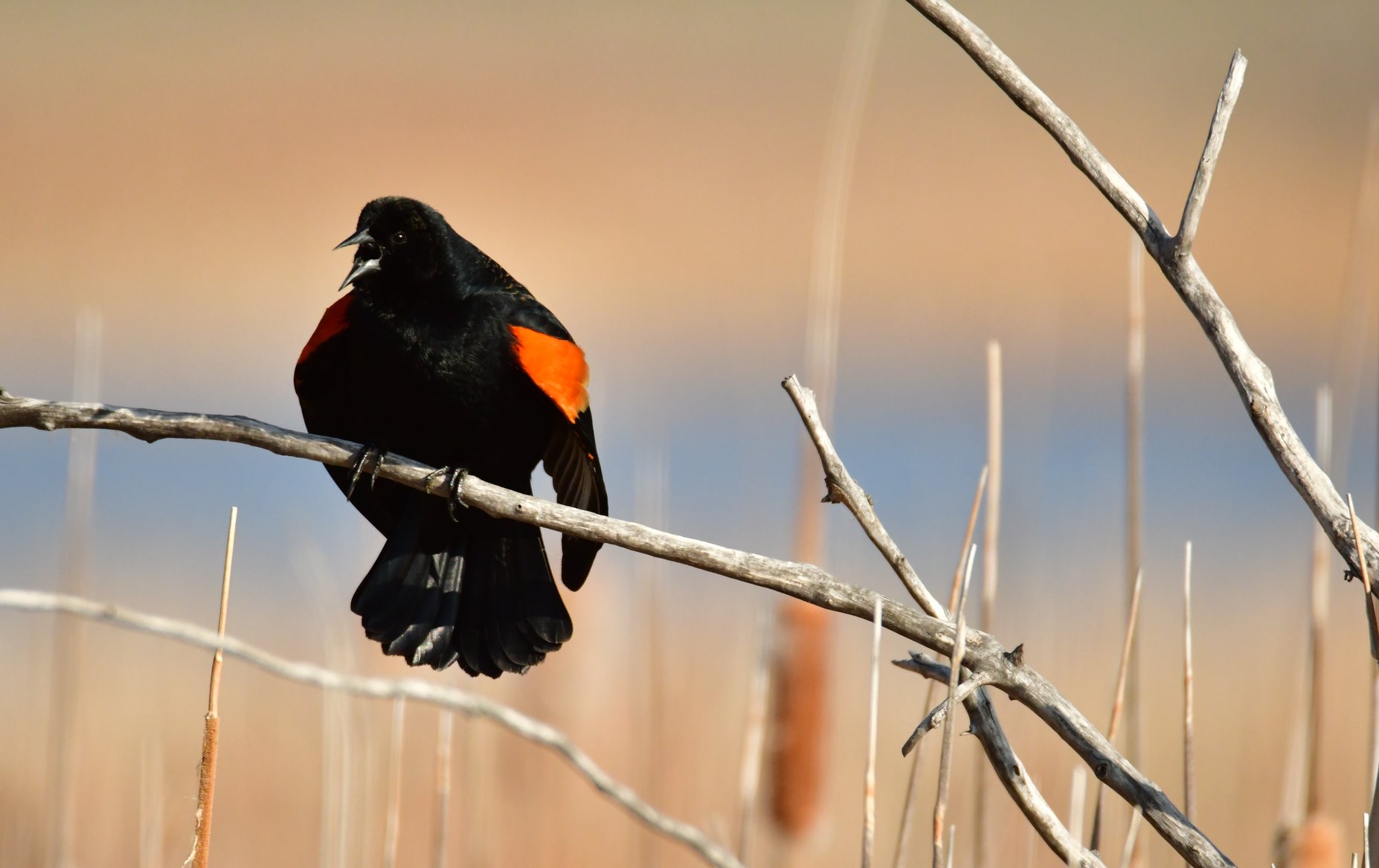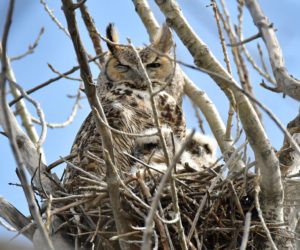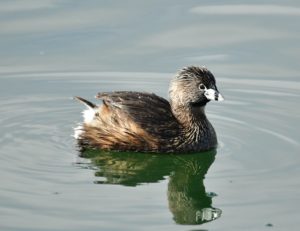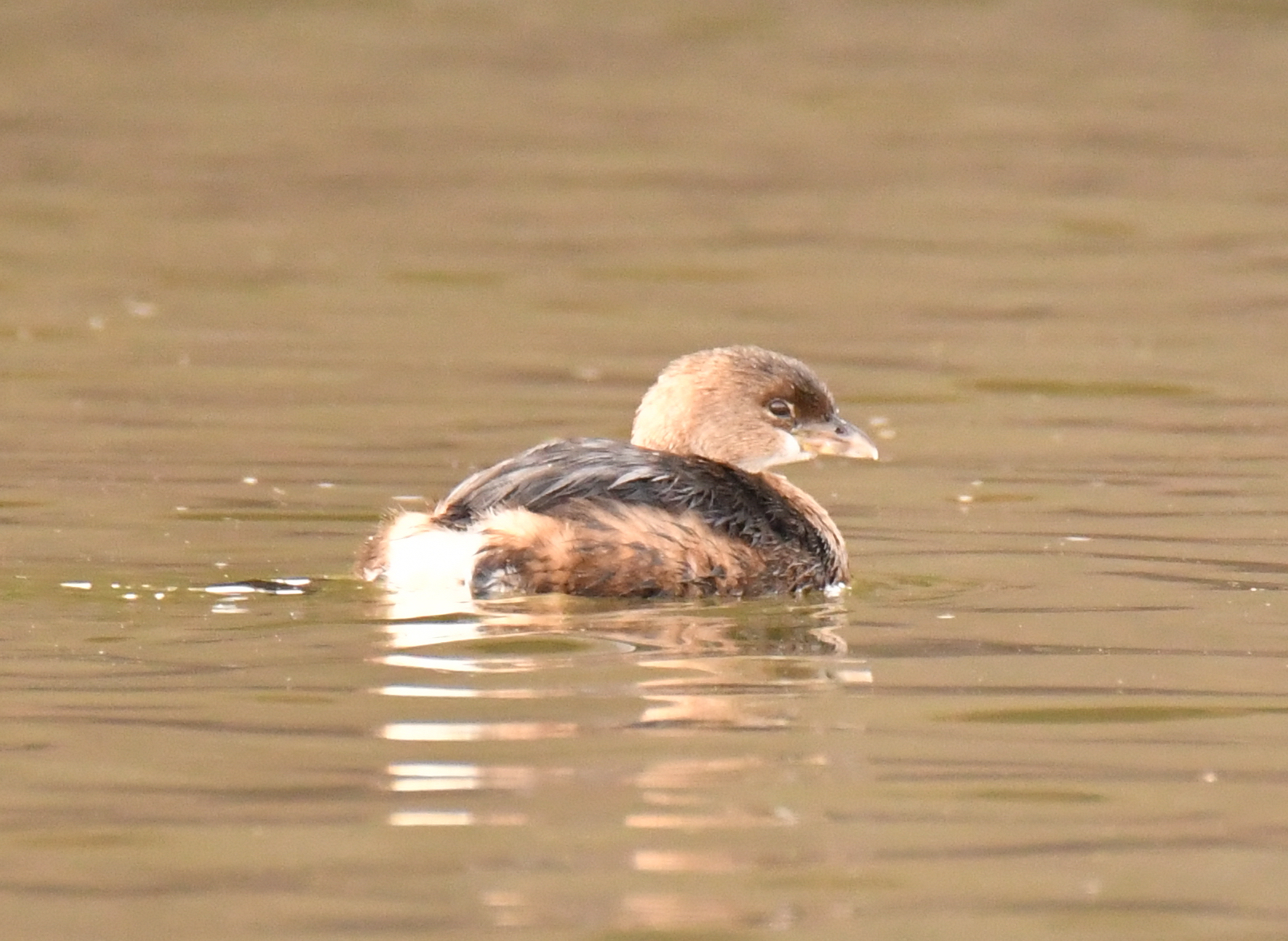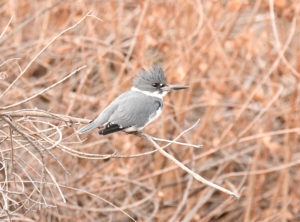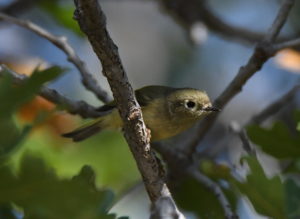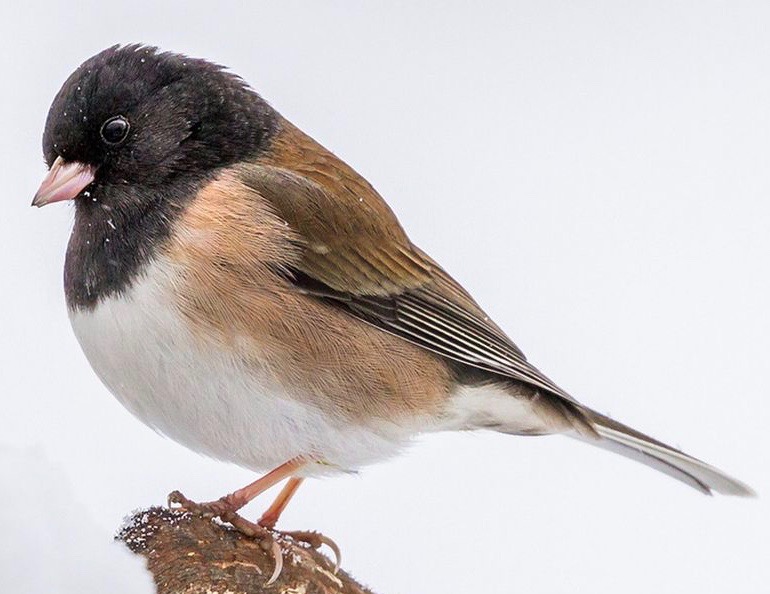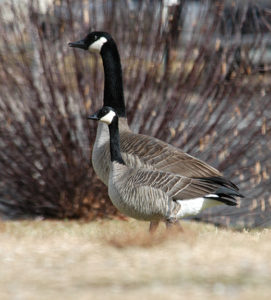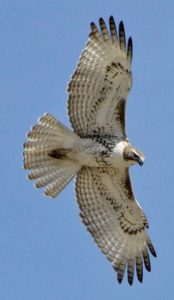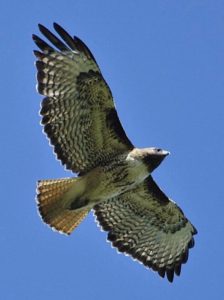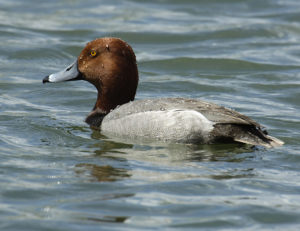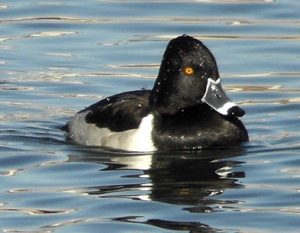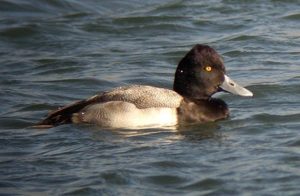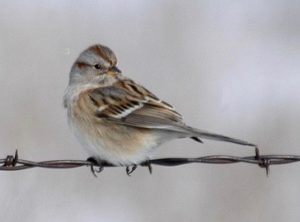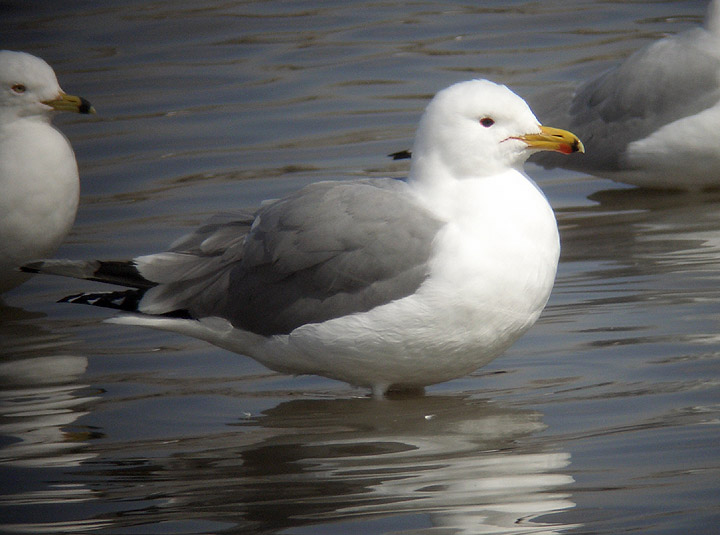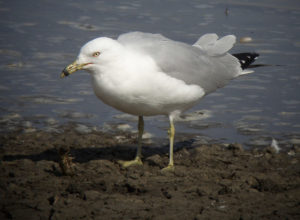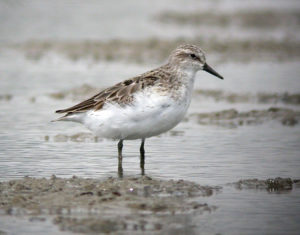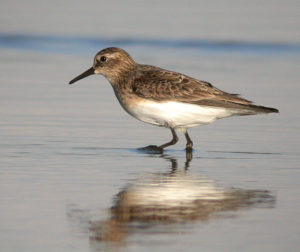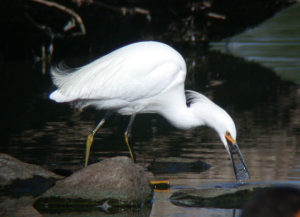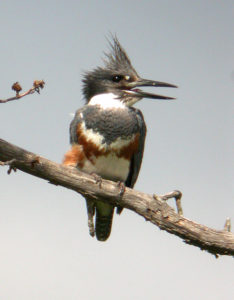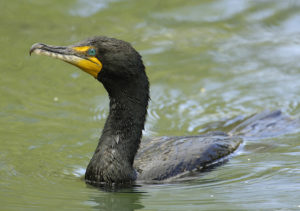It was a chilly one out on Saturday morning, but the birds were out and a pleasant time was had birding at Hudson Gardens! We observed a respectable total of 24 species (see the full list below or on eBird here), including some great wintering waterfowl and a wonderful winter surprise: a Northern Shrike.

Cackling geese inundated the lawns of the Gardens this morning. Note their stubbier neck relative to their more well-known cousin, the Canada goose.

American wigeons are unique ducks: they are parasitic — often choosing to steal prey from other waterfowl rather than finding their own — and their calls sound like a windup toy.
Eight of the species observed — largely on the South Platte River or on small ponds nearby — were a mixture of geese, ducks, and other waterfowl. The most numerous birds observed were Canada Geese and their close cousins, Cackling Geese; both are members of the genus Branta. Though visibly very similar, the two species can be told apart by their calls (the cackling goose makes a slightly higher “honk” than the Canada goose) and by the length of their necks, with the cackling goose having a more compact neck than its Canadian relative.
Also in abundance were Mallards, with precisely 69 seen over the course of the trip; Mallards are included in the genus Anas, which encompasses some 31 species of dabbling ducks worldwide. Another member of the genus observed on the South Platte this morning were a duo of male Green-winged Teals. Several Gadwalls and American Wigeons — common winter dabbling ducks — were also observed foraging alongside the Mallards and teals.
One of our diving ducks, the Bufflehead, was also out on the river, with both darker immature individuals and females and bright white mature males on display. No sign of the Buffleheads’ relatives in the genus Bucephala, the Common and Barrow’s Goldeneyes, on this trip however. Also putting some bright white breeding plumage on display were Hooded Mergansers, who were diving to forage alongside a large group of Gadwalls. Though these wonderful waterfowl species were a delight to see, notably missing were any species from genus Aythya: the Greater and Lesser Scaups, Ring-necked Duck, Redhead, and Canvasback.
One great surprise we had this morning was a bird with a high fearsomeness-to-size ratio: a Northern Shrike! Shrikes are technically songbirds; however, they hunt for prey such as lizards and small rodents just like raptors. Since they are not technically raptors and don’t have large talons at their disposal, shrikes will attack and carry prey with their specially adapted hooked bills; in order to kill and consume their prey, they will impale their unfortunate catch on spikes, such as the thorns on a honeylocust tree on the barbs of a barbed wire. As their name suggests, these shrikes breed spruce forests in Alaska and the northern Canadian provinces; they spend their winters from British Columbia to Massachusetts. Getting to see one on our walk was a real treat.

Our surprise shrike was too far away to get much of a snapshot, but you can still see this individual (likely a first-year bird) has a distinct hooked beak. This one was showing a diagnostic shrike behavior: perching high in a tree to survey the ground below for prey.
Aside from waterbirds and the shrike, the normal cast of characters was present during our walk: Northern flickers, a Killdeer, American Robins, Red-tailed hawks, Ring-billed Gulls, and a single female American kestrel were all spotted.
Finally, we had good numbers of feeder birds close to the end of our trip, including Downy Woodpeckers, Red-breasted Nuthatches, House Finches, American goldfinches, Dark-eyed Juncos, and plenty of Black-capped Chickadees.
This trip was emblematic of the joys of Colorado winter birding: even in a location with a relatively high level of habitat disturbance and modification by humans, a wonderful suite of birds was present and could be seen fairly easily. As a recent transplant to Colorado from New England, I’m constantly impressed with the ease and facility with which one can observe many wonderful wild species, even in Denver’s back doorstep. All the more reason to get out those binoculars and check out our native avian fauna this winter! Check out even more photos of this morning’s birds in the gallery below.
Your humble scribe and photographer,
David Chernack
Hudson Gardens, November 18
24 species
53 Cackling Goose
200 Canada Goose
20 Gadwall
18 American Wigeon
69 Mallard
2 Green-winged Teal — Both males
10 Bufflehead
5 Hooded Merganser
2 Red-tailed Hawk
1 Killdeer
6 Ring-billed Gull
1 Belted Kingfisher
3 Downy Woodpecker
1 American Kestrel — Female
1 Northern Shrike — Female
5 Black-billed Magpie
5 American Crow
12 Black-capped Chickadee
2 Red-breasted Nuthatch
1 American Robin
5 Dark-eyed Junco (Slate-colored)
12 House Finch
10 American Goldfinch
2 House Sparrow
